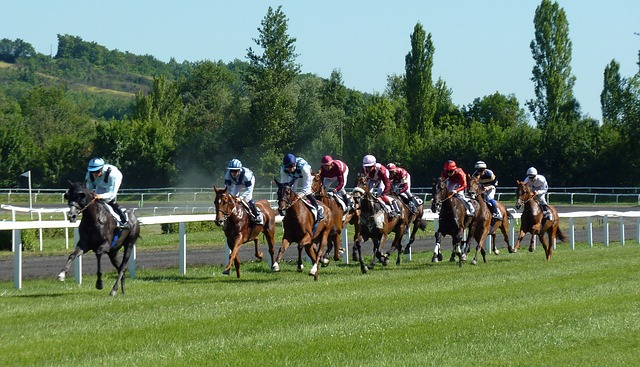The Number One Question I Get Is “Do I Need An ISBN”, But “Do I Need Barcodes?” Comes In Second.
Before we dig deeply into barcodes and ISBNs and why any of this is needed, let’s get one thing out of the way.
- If you intend to sell your print books in stores—yes, you need a barcode.
That’s the bad news. The good news is that you don’t have to buy one. That’s right. Despite what you’ve heard, or what companies and even “official-sounding” websites might say, you do not have to purchase a barcode. Before we tackle that can of worms, let’s look at a few details on barcodes.
Bookland EAN Barcodes
This section came from the information provided on Bowker’s site where you can purchase barcodes for $25 each. If you’re wondering “what are Bookland EAN Barcodes”, read this:
While most retail products in the US are marked with a UPC symbol, virtually every other country uses the European Article Number (EAN). To provide world wide standardization in the sale and handling of books and because the book industry produces so many products annually, a special “country” with its own EAN prefix just for books has been designated in the EAN system — 978 for “Bookland” — which is used in the universal barcode system. Any EAN which begins with the 978 prefix is called a Bookland EAN barcode and is used on books and book related products internationally.
Where Do I Put The Barcode
Barcodes are placed on the back cover of the book, in the bottom right corner.
What Information Is Included In The Barcode
All Bookland EAN barcodes contain the ISBN for the book, displayed on the top and bottom of the barcode. In addition, a second code is placed to the right with a 5-digit add-on. This numeral contains information about the price.
How To Interpret The Data
The ISBN contains a lot more information that you might think. Read the post I did on Do You Need An ISBN to get an idea of how to translate that unique number into something meaningful. As to the pricing information—that’s easy. Look at the image of the barcode below. You’ll see the ISBN on the left and the other generated code on the right with the 5-digit code on top. It starts with a “5” which means that the price is in US dollars. The numerals following that “1795” indicate a price of $17.95.
According to Bowker, scanners in US bookstores cannot read the Bookland EAN code without the 5-digit add-on, which is why Barnes & Noble now requires the this barcode on books they sell. You might have seen books with a “90000” above the code. This indicates that no price was specified by the publisher.
Note:### Quite a few authors choose not to include a price on their books, because if you change the price you need a new barcode.
More Information
Joel Friedlander, a self-published author and award-winning book designer, wrote a great article on Bookland EANs which goes into a lot more detail than I do. I’ve cited an excerpt, but you can read the full post here: Self-Publishing Basics: Deciphering the Bookland EAN Bar Code. This is something I hadn’t thought of, and didn’t know about until I read Joel’s post. Here it is in Joel’s words.
In an earlier article I wrote about the importance of creating your Advance Review Copies (ARCs) without a barcode, since this would signal pre-publication reviewers that the book was for sale. This may mean that you will need to find a different vendor for your ARCs. Here’s why: Printers who use digital printing for print-on-demand distribution always put a barcode on the back cover of the book, and another barcode on the last page of the text block. This allows them to use highly automated equipment to match the correct cover with the correct text block. In this scenario, it would be impossible for the printer to produce your ARCs without a barcode, and you will need a digital printer who is not a print-on-demand supplier.
Getting Back To Cost
Assuming you are an indie author or a small press, and you are using IngramSpark and/or CreateSpace for POD[2], your barcodes are provided free when you set your book up for print. They already have your ISBN number. All you have to decide is whether you want to include the price.
Why Do Companies Sell Barcodes
So…do I need barcodes on my books?
It’s a legitimate question—why do companies sell barcodes if you can get them free? The answer is also simple. Not all printing companies offer free barcodes. In fact, some companies charge quite a bit for barcodes. Fortunately there are places to make your own barcodes even if you’re not going through Ingram or CreateSpace. I found one such place that looks great. Steve Bookow, who you can find at Bookow.com offers free Bookland barcodes, a free tool to hyphenate ISBNs, and free CreateSpace cover template generator. You can find them all here. In addition, Steve does what he describes as “painless print and e-book formatting” and he even lets you “try before you buy” with a watermark. Prices seem more than reasonable.
Bottom Line
There is a whole lot more to this barcode business than I laid out here, but this should cover the basics. Check out Joel’s article, and check out Steve’s site. I’m sure you’ll learn a lot more.
If you enjoyed this post, please share.
Giacomo Giammatteo is the author of gritty crime dramas about murder, mystery, and family. And he also writes non-fiction books including the No Mistakes Careers series. He lives in Texas where he and his wife have an animal sanctuary with 45 loving “friends.”




















Connect
Connect with us on the following social media platforms.